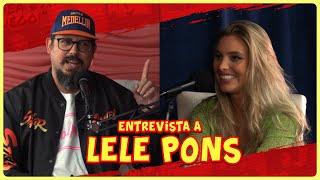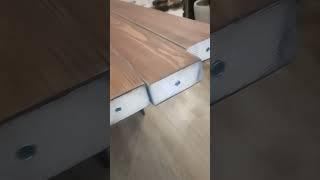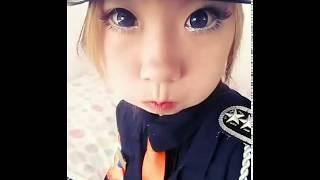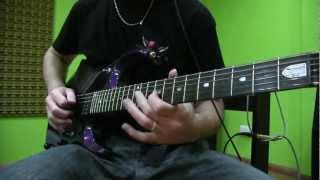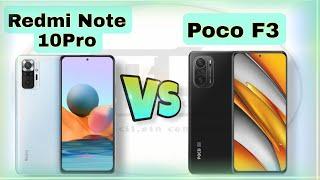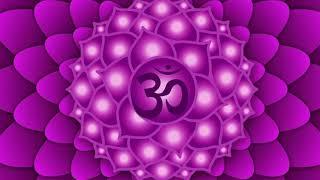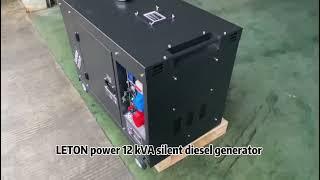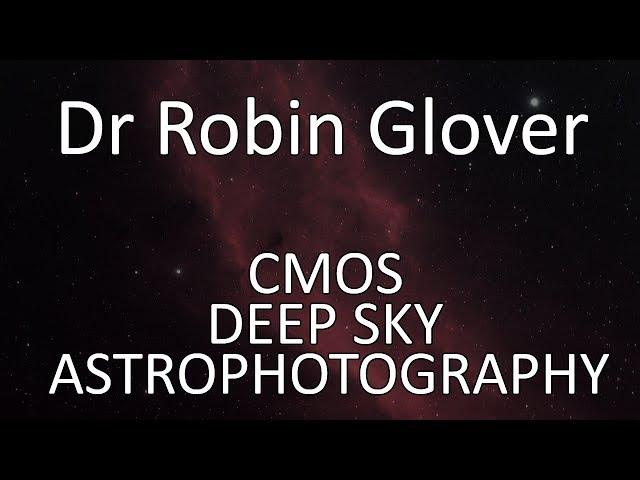
Deep Sky Astrophotography With CMOS Cameras by Dr Robin Glover
Комментарии:

This was really interesting. I'd like to see a presentation with updated information with reference to some of the much more modern astrocams.
Ответить
Sharpcap doesn't do sensor analysis at all, at least for me, initially tells me that my light panel isn't bright enough, then can't cope with any alternative brightness, gets stuck in a loop until I give up. So glad I paid for a licence . I use this light panel to take my flat frames, without complaint from NINA.
Ответить
Hello AstroFarsogaphy, and many many thanks (of course thanks to Dr. Glover too!) for posting this unvaluable scientific distillation of one of the most mythicized theme in astrophotography. This is a must-to-be-seen video for everyone who seriously want to face this journey.
Ответить
Thanks for sharing!
Ответить
Excellent presentation! Thank you very much. How does the formula change if I use a light pollution filter like an Optolong L-Pro? Do I still have to multiply by 3 or can/should I multiply by a higher number? I really learned a lot today, thanks again.
Ответить
looks like a bunch of balding men!
Ответить
Great video! I was an astro-imager (we called ourselves astrophotographers), in the late 80s thru the mid-90s. I quickly realized that I had to have my own darkroom to process my film and print my images because even the pro-level camera stores had no idea what we were shooting and what we were trying to see in the prints. We typically used exposures of up to 90 minutes for deep-sky objects. Now there's a sub for you! Planetary imaging was a different monster Eventually, stacking negatives became the big thing, pioneered, at the amateur level, by Tony Hallas and a few others. And, as Dr. Glover points out, it was extremely challenging. However, once it was done (and I was only ever to successfully stack 3 negatives), the results were amazing compared to a single negative. Image contrast was increased and film grain was minimized...just what the doctor ordered! That's my two cents! Now, back to the rest of the video!
Ответить
3 years of personal discovery covered in 50 minutes.
Ответить
Thanks for the vid. Great info.
Ответить
Interesting lecture indeed, however the formulas presented by Dr Glover fail to take into consideration the amount of subexposure time needed to capture faint nebular details which leads me to believe that this is incomplete, at best
Ответить
This tells me one major thing: There's no need for me to ever upgrade from my EQ5 to something larger (given my payloads). So no need for an EQ6R pro or EQ8 and £thousands poorer. I wonder if the manufacturers are happy with him? LOL There was the "Lightbulb Conspiracy" and now there's the "EQ Mount conspiracy"!
Ответить
There actually is a good reason to go beyond recommended exposure time in light polluted skies. I really don't want to stack 8 hours worth of 12 second exposures.
Ответить
Very interesting
Ответить
I didn't see anything about exposure for a RGB camera with a light pollution filter. Did I miss it?
I saw 25x for 12nm and 100x for 3nm filters. Does he mean to multiple 3x for colour sensor and 25x or 100x depending on which light pollution filter you have? Thanks

One comment on ADU values. This is an averaged value and while it is applicable to most nebulae, galaxies and bright reflection nebula tend to cause that formula to break down. This is because the core will inflate the value leaving fainter parts of the image at or below the read noise. M81 is very bright but if you want to get Holmberg IX you're going to need longer exposures than what that formula suggests. If you want to get the IGF, then you need even longer exposures. It is better to rely on your eyes than theory. Are you clipping the white values or are stars bloating from saturating the cells? If not taking longer exposures are better. The one caveat is with broadband and light pollution because you start to lose SNR with longer exposures. I find 3min is the max with an 11" aperture using LRGB.
Ответить
Thanks a million, Ruzee! This is great info.
Ответить
Thank you so much for this awesome lecture! It's really helpfull
Ответить
I so surprised that under light pollution quite short subs already give quite an optimal result.
I calculated for Bortle 8, F/6.5, ASI ZWO 224mc with reasonable gain and with 5% extra noise I can work with 2s subs! That means I can use my mount in AZ mode without guiding etc. Even under Bortle 6 it is only about 2.6s...
Fascinating!

That guy is barking not talking 😞
Ответить
Would this mean, that with a colour camera in bortle 5 (3x17s=51s) i would get diminishing return after about 100sub a 51s.
so after roughly 90min i can go home?
versus in bortle 3 data improves in the first 6h?

The final results seem a bit counterintuitive-- they suggest you're better off imaging under light-polluted skies because you can use shorter exposures.
Ответить
That was excellent information! Thank you
Ответить
I wish they could have let him have more time. Gain is important... The math doesn't work either for my camera- using his equation my ideal exposure time is 2 seconds. Is there any other video of this full presentation where he isn't rushed?
Ответить
I still think you need a go-to mount in many cases because there are many targets you can't even see with the naked eye. I've tried to get these targets manually with a Skyguider Pro single axis non-go-to equatorial mount and have had little to no success with that.
Ответить
Thanks you for posting this, my wife purchased sharp cap after our free trial with our Altair gpcam 290C ran out. Totally worth it. 👌 I've used it for planetary imaging on Venus, Mars, Jupiter,Saturn & the Moon 🌙 I've recently started remotely operating my setup using Astroberry with Kstars/Ekos through a tablet,,but I allways plug the gpcam into the lap top first & use sharpcap polar alignment,,it's so fast to get " excellent " ,,I just couldn't manage without it .
Ответить
Great video! Thanks for sharing!
Ответить
This was a true eye opener. I never really thought of 5 or 10 min exposures as excessive but they are totally pointless it seems. Sounds like you take 5 hours worth of 10 minute exposures it’ll be no better that if you got 5 hours worth of 1 minute exposures - and you don’t have the risk of having to throw away bad subs that cost you a load of precious time. It’s the total integration time that matters and not so much how you got it. The data that gives you those finer details we see in the 10 min shots is still there once you stack the 1 min shots. The only benefit to the long subs as far as I can tell is that it takes less computer resources to store and stack. Have you come across any other pros/cons in the long vs short exposure argument?
Ответить
Thanks for grabbing this info!! one of the best videos on the subject !!!
Ответить
Just saw this. He was able to explain exposures better than anyone else could. Thanks for uploading this.
Ответить
Do's this arm make my body look small?
Ответить
Nice talk.
Still a bit confused about it since i find that somewhat long exposures still is king. Sure if you want a low noise picture by all means do so, but i think its more fun to get more information and slapping on more subs doesnt always provide that imo. (I dont know why this is pretty much the oposit to whats explaind here) but i feel that there must be data there in the first place!
Orion at my area with 20sec up to 120sec subs provides about what you can see here. While my 300sec subs are AMAZING in comparision! Doesnt matter how many subs id slap on the lower exposure it never reaches the same ammount of details.
When my cmos arrives i might rethink things a bit tho.

Excellent!!
Thank you for the video!

Thank you for sharing dr Glovers presentation. Why does he tell us that longer exposures are required from a dark site than a light polluted site to reduce noise? Seems like exposures could be shorter at dark sites. Warren
Ответить
This is brilliant! Thanks so much for sharing.
Ответить
Just found this. Thank you for posting. Much appreciated. 👍
Ответить
Fantastic!!! By any chance, Did the Dr. Make his slide deck available?
Ответить
This is really really helpful. Thank you for sharing!
Ответить
Got a bit confused with exposure time, I'm using the ASI533MC Pro (which has read noise of 1.0e) with L-eXtreme narrowband filter which is 7nm I believe, and WO Z61 (f/5). what should my exposure time be in Bortle 9? I should multiply 0.5 by ..... ?
Ответить
An excellent tutorial which every astro person must know properly
Ответить
Awesome video. I have maybe a dumb question. Do the final single sub exposure time have any bearing on what is the mag value of the target? For example if I arrive at a number 45s subs, could that number be different for different targets - especially in terms of getting the details. For background noise, I totally understand the math and reasoning. Again - I am asking coz I don’t understand, not questioning the overall premise.
Ответить
Outstanding presentation!!! Thanks a million for all those detailed explanations!
Ответить
Hi! How can I focus my ccd camera in my telescope for deep sky objects? New on this and having a hard time... Planets are some how ok, but can't see deep sky objects
Ответить
Thank you for recording and sharing this!
Ответить
Thanks for sharing. This video helped me !
Ответить
Awesome share..very valuable..thank you so much. 🙏
Ответить

